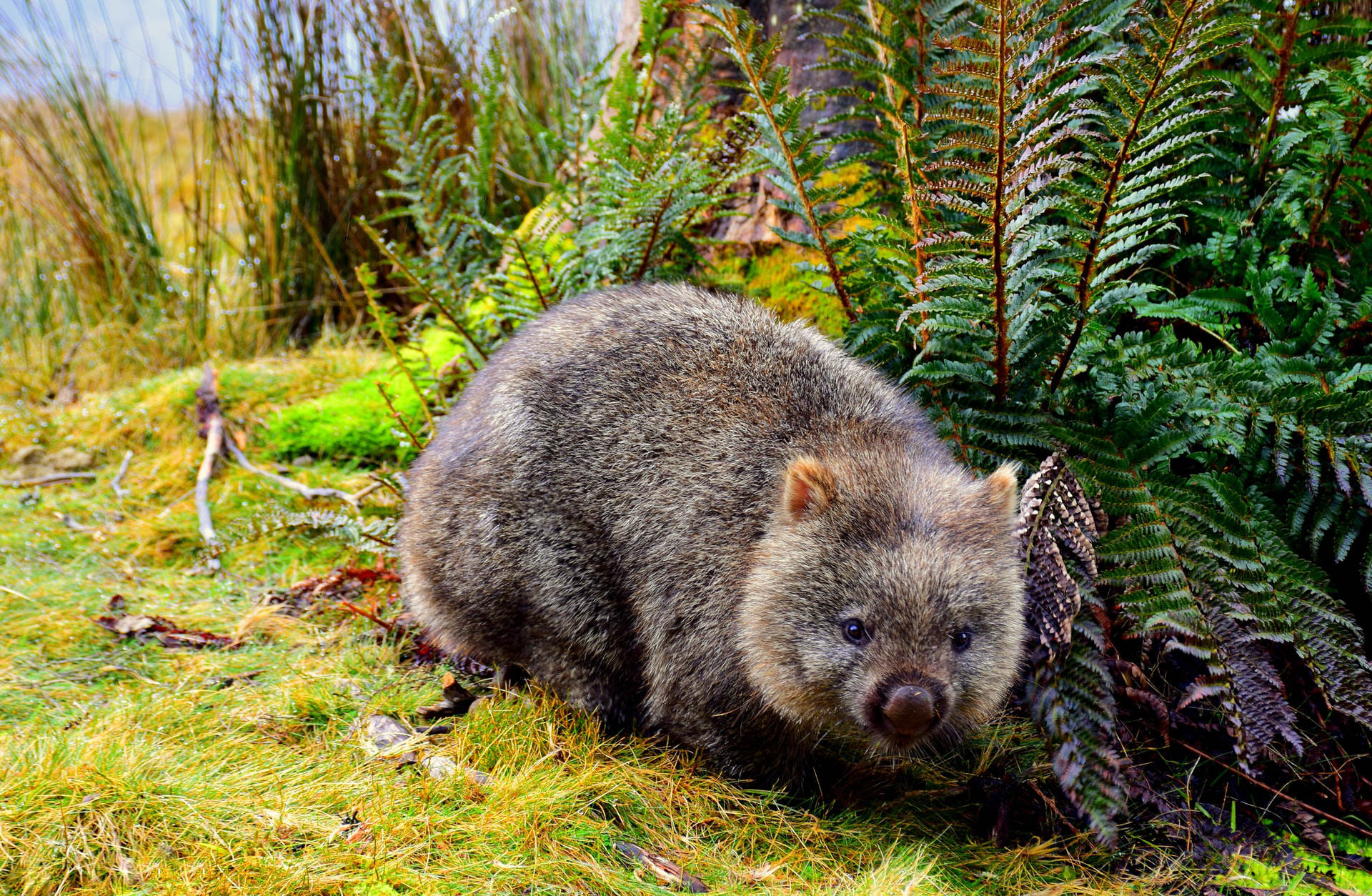 Evolution & Behaviour
Evolution & Behaviour
How wombats poop cubes
Scientists have solved the mystery of how wombats make cube-shaped poops - and the answer is not a square butt-hole! A new study reveals that muscle contractions in the wombat’s intestines mold these cubes.

A great mystery of the natural world has been how wombats make cubic faeces from their round anus. Wombats are the only species known to make these box-shaped poops which scientists believe they strategically place to communicate with each other. The cubic shape helps the poops to stay in place and not roll away. Now, a team of mechanical engineers and biologists has shown how differing stiffness in the intestines makes this cube shape. They believe wombats can inspire manufacturing processes, providing a different way to make a cube.
Wombats are Australian marsupials, which are around 1 metre long, 30kg in weight and poop up to 100 cubic poops per day. The researchers studied the bare-nosed wombat, which makes the most cubic poop out of the three wombat species.
Previous suggestions for how wombats make cubic poops included that they may have square anal sphincters or that they use their pelvic bones to compress the poop. The researchers started by testing these ideas using a CT scan of a live wombat (the same machine used for medical scans, which takes many x-ray images from different angles to create a 3D model). Surprisingly, the CT scan showed that the wombat's anus is round like other animals and that the pelvic bones are far from the large intestine, indicating that they could not compress the poop. Therefore, the cubic faeces form during the passage through the intestines, rather than in the exit.
They then dissected three wombats that were killed by traffic collisions to study their digestive systems. They found that as the faeces moves through the intestine, the closer it gets to the anus, the drier and more cubic it becomes. The poops' water content was much lower in the last 17% of the intestine where the most cubic shapes were. The removal of water from the poo may help it keep its shape better.
By studying sections from the intestine under the microscope and measuring its stiffness at different points, they found that in the last section of the intestine, the stiffness was not uniform. There were two stiffer regions, creating a "stiff-soft-stiff-soft" pattern around the intestine circumference. Using what they learned from the dissected intestines, the researchers created a computer model to replicate how the wombat intestines contract and relax, and how this forms the cubic shape. To make it simpler to create and study, the computer model only represented a 2D cross-section of the intestine, which made square poops - rather than a 3D intestine-model that would presumably make cubic poops. The researchers also tweaked parameters of the model to see which properties were important for making the faeces' square shape. When the model included the two stiffer regions, square poops were made. When the computer model had uniform stiffness, it no longer made squares, showing these stiffer regions are vital for forming the square shape.
The researchers compare a cross-section of the wombat's intestine to "a rubber band with two ends kept slightly taut and the center section drooping". The taut and elastic parts will contract and compress the poop at different speeds, forming the corners and cubic shape.
Interestingly, they used their model to predict what would happen with 3 or 4 regions of stiffness along the circumference of the intestines. This forms hexagon or octagon shaped poos! Perhaps we will one day see an animal make star-shaped poops.
In this study, researchers show that wombats form cubic poop by drying it and using their contracting intestines with differing stiffness. In the future, the computer modelling could be improved to consider the increasing dryness and make 3D cubes rather than 2D squares. This remarkable and curious feature of the natural world could inspire manufacturing geometric shapes. Currently, cubes are made from cutting or moulding. Wombats' intestines could provide us with a new cube-making method.
Original Article:
Yang, P. J. et al. Intestines of non-uniform stiffness mold the corners of wombat feces. Soft Matter 17, 475-488 (2021).
Next read: Rudimentary form of syntax present in chimpanzees by Maël Leroux
Edited by:
Dr. Ayala Sela , Associate Editor
We thought you might like
More from Evolution & Behaviour
Cicada emergence alters forest food webs
Jan 31, 2025 in Evolution & Behaviour | 3.5 min read by Martha Weiss , John LillSize does not matter: direct estimations of mutation rates in baleen whales
Jan 29, 2025 in Evolution & Behaviour | 4 min read by Marcos Suárez-MenéndezThe Claws and the Spear: New Evidence of Neanderthal-Cave Lion Interactions
Jan 22, 2025 in Evolution & Behaviour | 3.5 min read by Gabriele RussoA deep-sea spa: the key to the pearl octopus’ success
Jan 20, 2025 in Evolution & Behaviour | 3.5 min read by Jim BarryFeisty fish and birds with attitude: Why does evolution not lead to identical individuals?
Aug 31, 2024 in Evolution & Behaviour | 3 min read by Lukas Eigentler , Klaus Reinhold , David KikuchiEditor's picks
Trending now
Popular topics


